Ever wondered what makes Batman so timelessly appealing? His secret lies in being the epitome of adaptability. The Dark Knight’s ability to captivate audiences across generations isn’t merely about his gadgets or Gotham’s skyline. Consider the evolution of Batman’s suits: from the classic gray and black attire to the high-tech, armor-clad ensembles of recent years. Each upgrade isn’t merely a cosmetic change; it serves a purpose, addressing contemporary threats and enhancing Batman’s capabilities. In the same vein, brands evolve by tweaking their visual identity, product offerings, and strategies to remain relevant in an ever-changing market.
Brand evolution is all about embracing change without compromising essence. Careful considerations are made, and subtle adjustments are implemented to enhance your brand’s appeal. This could manifest through a refreshed logo, an updated color palette, or a modernized messaging strategy all aimed at ensuring your brand remains a symbol of reliability and resonance in a dynamic market.
Let’s have a look at some of the most renowned brands in the world and the story of their evolution.
With its sleek designs and innovative products, Apple has risen to become the top brand in the world. But this success did not come overnight. It was a result of years of brand evolution and strategic branding strategies that Apple implemented.
Apple’s logo has transformed over the years, becoming a celebrated symbol of innovation. From the rainbow-colored apple in the early days to the minimalist monochrome design we see today, every change in the logo has been a reflection of Apple’s journey toward perfection.

Various branding strategies have played a vital role in establishing itself as the top brand in the world. From its marketing campaigns that evoke emotions and create a sense of exclusivity, to its meticulous attention to detail in product design. The brand has successfully positioned itself as a symbol of innovation, quality, and reliability, resonating with consumers on a deep level.
Where new brands emerge and fade away like shooting stars, Apple has managed to remain at the pinnacle of success, standing the ultimate test of time.
In the realm of branding, only a select few have managed to capture the hearts and minds of consumers across the globe. Among these giants stands Pepsi, The perennial rival of Coca-Cola. Pepsi has continuously reinvented itself to stay relevant in an evolving market. From its early days as a simple red and white logo, Pepsi has transformed into a vibrant, dynamic brand that resonates with the younger generation.
One of the most striking aspects of Pepsi’s brand evolution is its logo transformation.
The brand’s first logo featured a simple script font with the word “Pepsi-Cola” in red and blue. Over the years, Pepsi experimented with various logo designs, incorporating elements like wave shapes, bottle caps, and vibrant colors. From the classic script typography to the modern and sleek design, Pepsi’s logo has evolved to reflect the atmosphere of each era.
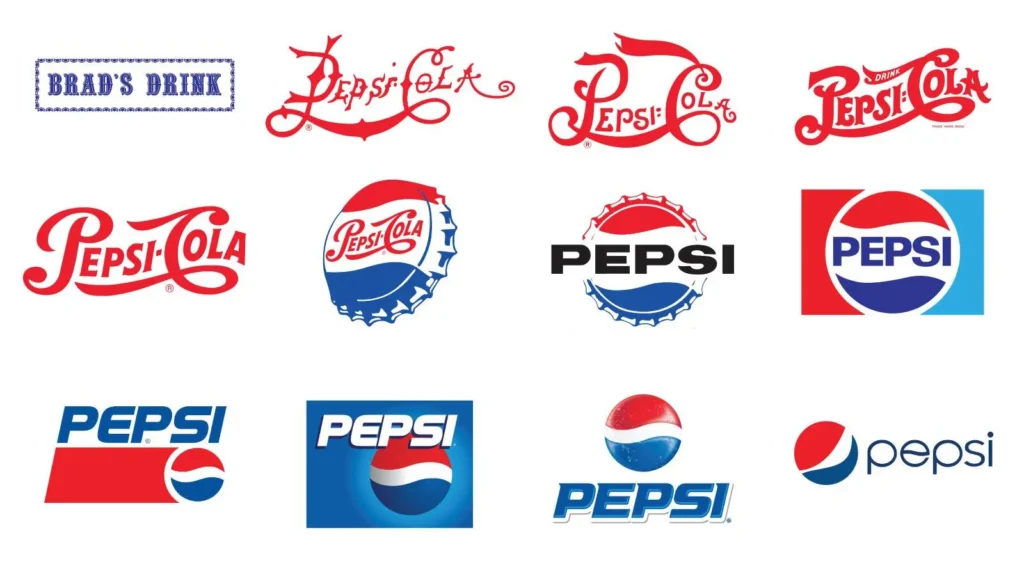
Pepsi understands that branding goes beyond mere aesthetics; it is about creating a connection with consumers on a deeper level. Through innovative advertising campaigns, strategic partnerships, and an engaging social media presence, Pepsi has successfully carved a niche for itself in the hearts of millions.
By constantly adapting to changing consumer preferences and staying ahead of the curve, Pepsi has managed to remain relevant in an increasingly saturated market.
Starbucks transformed from a coffee chain into a cultural phenomenon, starting as a single store in Seattle and rising to global dominance. Pioneering branding strategies played a crucial role in this ascent.
Initially, the brand’s logo showcased a brown siren with a slightly daring design. In 2011, Starbucks introduced a major update, removing all text and emphasizing only the iconic siren. This alteration symbolized the brand’s confidence and a global reputation for top-notch coffee. The simplified logo allowed Starbucks to expand beyond core coffee offerings, venturing into new product categories while maintaining a strong brand identity.
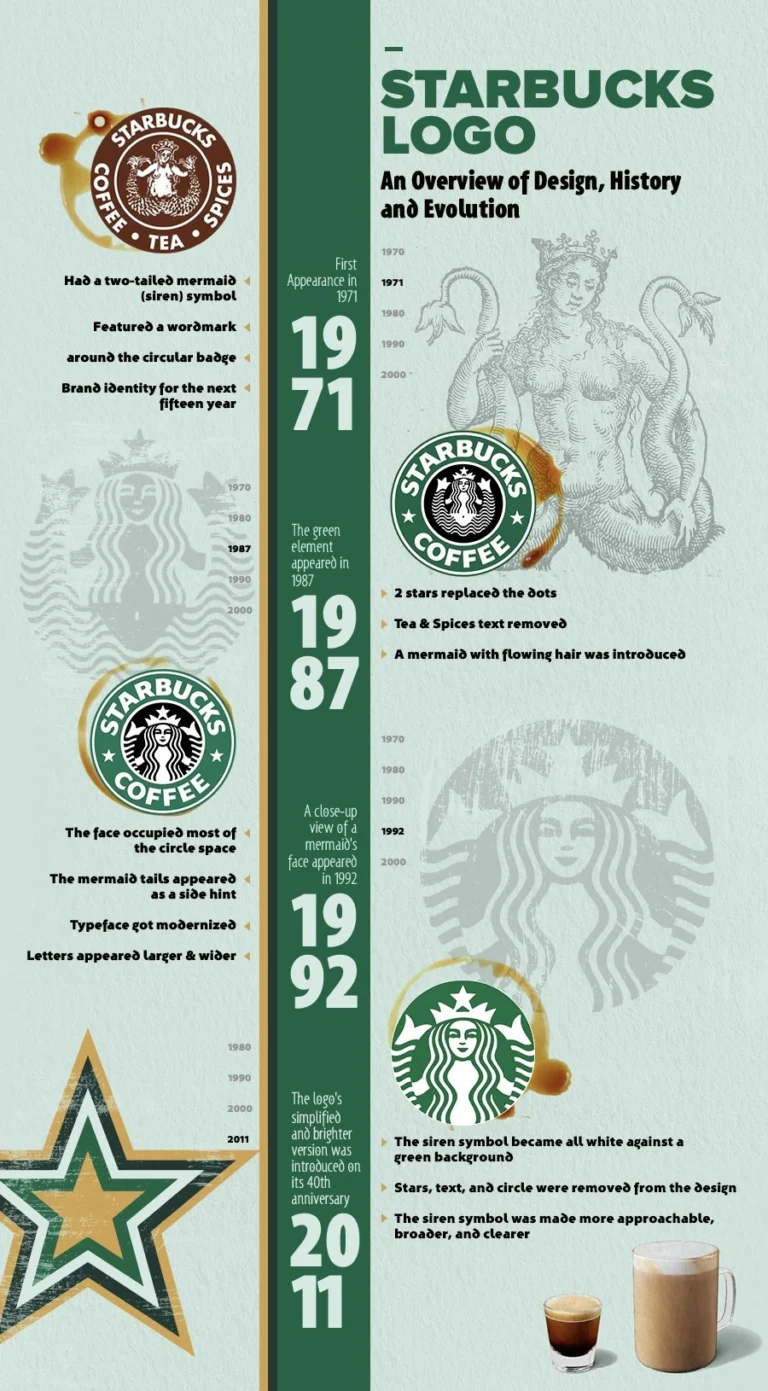
Every logo change was carefully done to match the times and represent the brand. The famous mermaid in the logo is now a symbol of Starbucks’ charm and uniqueness.
Starbucks has successfully positioned itself as more than just a coffee shop; It’s a lifestyle brand. By making its stores inviting, Starbucks has created a friendly community where people love to go.
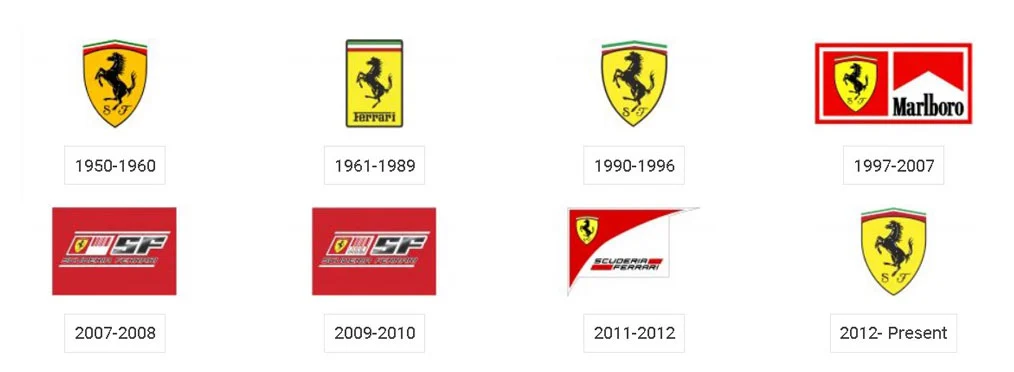
Ferrari’s success lies in being a perfect blend of style and performance. The brand’s strategic approach extends beyond cars, positioning itself as a lifestyle brand. By creating an aspirational image and meeting its audience’s desires, Ferrari has built a loyal customer base beyond car enthusiasts.
The key to Ferrari’s success is maintaining exclusivity while expanding its reach. Carefully choosing partnerships in industries like fashion, accessories, and even amusement parks has increased brand visibility and reinforced Ferrari’s status as a global luxury brand.
Google’s brand evolution is a captivating journey that resonates with billions of internet users worldwide, focusing on simplicity, innovation, and user-friendly design. The original playful and colorful logo represented the internet’s diversity and Google’s mission to organize information.
Over time, Google shifted to a cleaner and more modern look while keeping its friendly appeal. The logo continued to adapt to design trends, with a significant redesign in 2015 emphasizing simplicity and a contemporary feel while retaining familiar colors.
Beyond visuals, Google’s brand strategies are carefully crafted for a user-centric experience across its products, showcasing a commitment to inclusivity. The company’s innovation extends to products like Gmail, Google Maps, and Google Drive, reinforcing its tech leadership. Consistency in the brand strategy builds trust, while an emotional connection with users associates Google with curiosity, discovery, and the joy of finding information.

Netflix, the streaming giant that revolutionized the way we consume entertainment, has an intriguing brand evolution story. It began as a DVD-by-mail service and grew to dominate the streaming industry, adapting to audience preferences. The iconic red logo signifies a vast content library and the freedom to watch anytime.
Netflix’s logo has transformed over the years, mirroring shifts in the company’s image. From vibrant colors and a film reel symbol in the late ’90s to a more modern look in 2000-2001, the changes reflect Netflix’s readiness for new ideas and appeal to younger audiences. The best version came later, resembling a movie on a screen, symbolizing special movie time at home. As more young people embraced streaming, Netflix simplified the logo for quick and easy access to shows.

Yet, Netflix’s brand tale isn’t just about the logo; it’s about the company’s beliefs, personality, and values, making it unique. Constantly adapting to people’s preferences and maintaining a cool and distinct style, Netflix has become a global streaming leader. Its brand evolution showcases Netflix’s commitment to new ideas and ensuring everyone can have a great movie time.
Its iconic red logo has become instantly recognizable, symbolizing a vast library of content and the freedom to watch what we want, when we want.
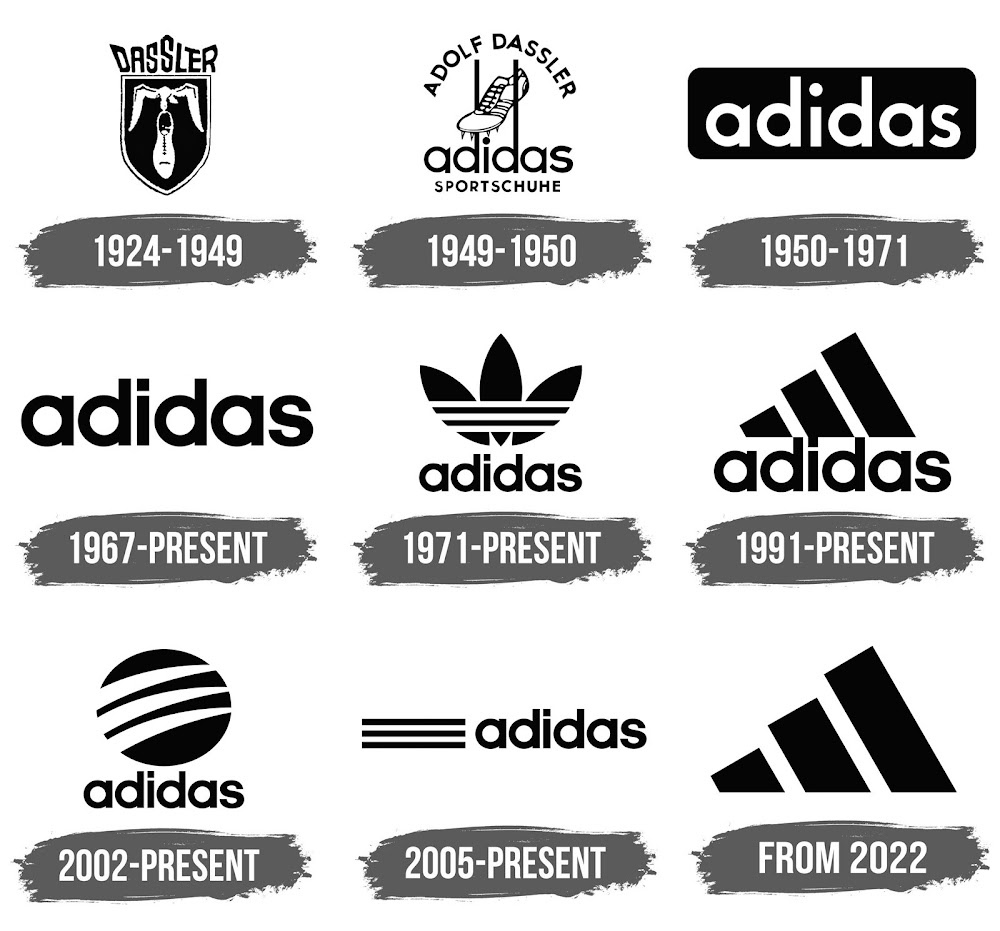
In 1971, Adidas unveiled the trefoil logo, highlighting the diversity of its products. This logo, still in use today, has evolved into a symbol of the brand’s lifestyle and casual streetwear. In the 1990s, the logo transformed to resemble a mountain, and in 2002, the renowned three stripes were enclosed in a circle. Each rendition of the logo conveys distinct meanings, including durability, variety, overcoming challenges, and global adaptation. This flexible branding approach enables Adidas to resonate with a diverse audience and clearly convey its brand values.
The success of Adidas branding can be attributed to its forward-thinking strategies and strong brand identity. Partnering and associating with accomplished athletes and celebrities has enhanced its image. Aligning with those who represent excellence and success, Adidas has become a leading sportswear brand globally, known for quality and style.
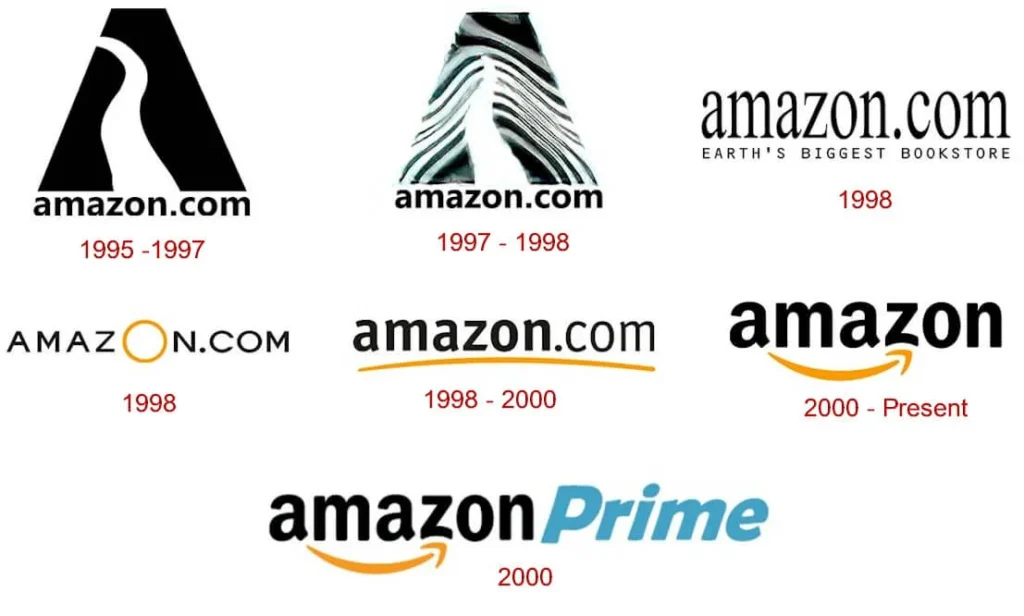
Its simple yet iconic logo, accompanied by its commitment to customer satisfaction and convenience, has made Amazon a symbol of endless possibilities and reliability. The Amazon logo isn’t just a visual; it’s a powerful symbol reflecting the company’s growth. Starting with the letter “A” stands out, aiding easy recall. The logo also features an arrow connecting “A” to “Z” forming a smile. This clever design creates a friendly and trustworthy image. The arrow signifies progress and speed, aligning with Amazon’s commitment to innovation and fast shipping with Amazon Prime.
Amazon’s branding strategies are key to its global prominence. By incorporating symbols, strategic positioning, and connecting with its audience, Amazon has built a brand synonymous with trust, reliability, and customer satisfaction.
From its early days as an automobile manufacturer to its current status as a global luxury brand, Mercedes Benz has consistently pushed the boundaries of design and innovation. Its iconic three-pointed star logo represents the brand’s commitment to quality, performance, and sophistication.
This symbol, while constant, has subtly transformed over time to align with contemporary trends. Since its introduction in 1902, the logo has embraced a sleeker and more modern aesthetic while preserving its distinctive identity. This evolution mirrors Mercedes-Benz’s adeptness at adapting and innovating in a dynamic market landscape.

Mercedes-Benz has strategically employed effective branding tactics to establish itself among the world’s top brands. The company prioritizes marketing campaigns that not only highlight its products but also resonate with a diverse audience. By targeting a younger demographic and emphasizing a lifestyle-oriented approach, Mercedes-Benz has broadened its product range and heightened brand awareness. The company has also utilized creative advertising techniques, such as featuring popular celebrities and collaborating with popular shows, to create memorable campaigns that resonate with consumers.
From the unmistakable LV monogram to innovative collaborations with contemporary artists, Louis Vuitton’s brand story is a testament to its enduring commitment to timeless elegance and unparalleled craftsmanship. Louis Vuitton gracefully treads the line between tradition and innovation, weaving a legacy where tradition meets avant-garde style.
The French fashion powerhouse known for its luxurious luggage and accessories has an enduring history. Few brands have managed to maintain their status and relevance quite like Louis Vuitton has over a century.

Louis Vuitton’s intertwining monogram logo, a creation by Georges Vuitton, serves as a symbol of prestige and elevated status. Louis Vuitton’s color palette serves to amplify its aura of luxury. The brand mainly uses a rich brown color called ‘Monogram Canvas’ or ‘LV Monogram Brown,’ as their signature hue. This coupled with gold accents in the logo and hardware, evokes opulence and sophistication.
Despite its age, the Louis Vuitton logo remains relevant and continues to be modernized. Its timeless design has become a piece of history and craftsmanship in itself. As other luxury brands strive to stand out in a crowded market, they can look to Louis Vuitton as a prime example of effective branding strategies. The use of logos has not only given Louis Vuitton more exposure but has also added to its brand recognition.
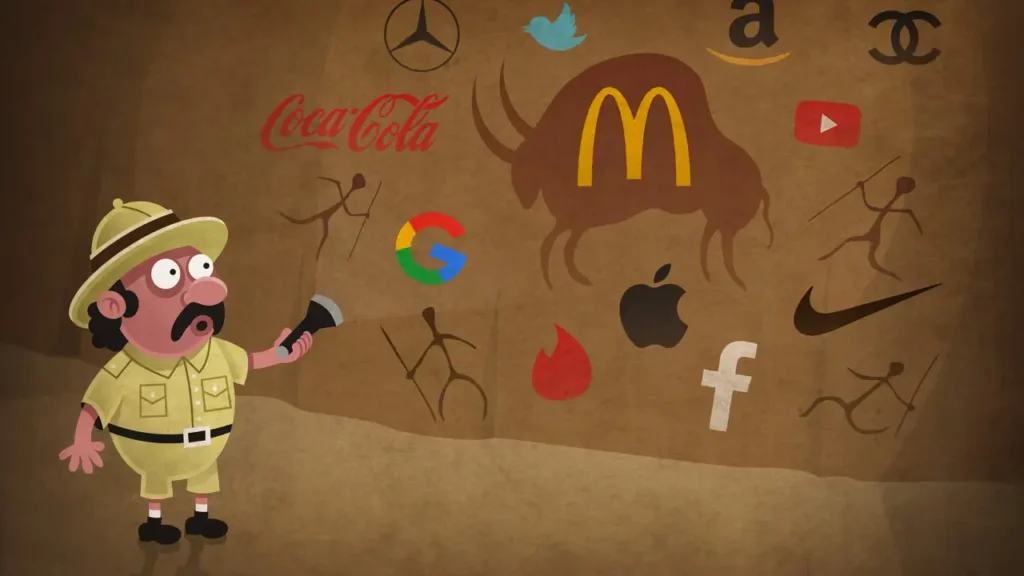
In the vast realm of brand evolution, one cannot escape the profound impact of brand history.
Brand history is a chronicle of a brand’s journey through time that unfolds the origins, trials, and triumphs of a brand, weaving together a tapestry of experiences that shape its identity and reputation. Similar to a hero in an epic tale, a brand’s history is marked by crucial moments that define its character.
The power of brand history lies in its ability to engage and create emotional connections. Just as people are drawn to stories resonating with their experiences, consumers are enchanted by brands that have stood the test of time. A compelling brand history builds trust, loyalty, and admiration, becoming a symbol of reliability and authenticity. It serves as proof of a brand’s commitment to excellence.
By understanding where it came from, a brand could better navigate the ever-changing tides of the market. It could draw inspiration from past successes and learn from past mistakes. Brand history became the foundation upon which strategies were built and decisions were made.
Once upon a time, in the magical world of entertainment, there existed a brand that would capture the hearts of millions and create memories that would last a lifetime. This brand, known as Disney, had a history as enchanting as its beloved characters. From its modest roots to global domination, is an extraordinary tale.
The brand evolution of Disney is a testament to its visionary creators and their unwavering dedication to creating magical experiences for people of all ages. Throughout the years, Disney has brought to life countless beloved characters such as Mickey Mouse, Snow White, Cinderella, and many more. These characters have become icons in their own right, synonymous with childhood wonder and joy.

A constant in Disney’s history is its iconic logo, a whimsical script with a castle, transporting us to a world of magic. This logo, subtly changing over time, reflects Disney’s core values of storytelling and enchantment. From animated films to theme parks, merchandise to TV shows, Disney expanded its brand empire while staying true to its roots.
The magic of Disney spans generations, reminding us that dreams can come true. Disney’s brand history is an innovative, creative, and timeless tale—a testament to the power of imagination and the impactful legacy of one of the world’s most beloved brands.
Successful brand evolution requires careful planning and strategic thinking. Brands often employ a well-defined framework that guides their evolution through the ever-shifting landscapes of consumer preferences, market dynamics, and competitive forces. These frameworks act as blueprints, steering the development, transformation, and adaptation of these brands over time.
This involves analyzing market trends, understanding consumer preferences, and identifying areas for improvement. Important components of these frameworks include scrutinizing every aspect of the brand, learning about customer preferences through research, and ensuring the brand looks and feels right. By implementing effective branding strategies, such as repositioning, rebranding, or refreshing their visual identity, brands can navigate the shifting landscape.
Brands like Apple, Google, Netflix, and Louis Vuitton have harnessed the power of these structured approaches, using them as essential tools in their strategic arsenals. These brands showcase how purposeful frameworks guide their brand evolution, enabling them not only to stay relevant but also to carve a lasting impact in the shifting world of consumer perception.
Remember, brand evolution isn’t just about logos. It’s about the story behind the brand, the history that shaped it into what it is today. It’s about how a small idea can grow into a global phenomenon, embracing change and never being afraid to try something new. The evolution process is a purposeful journey—one that acknowledges the changing landscape while preserving the core values that resonate with its audience.
The importance of brand history can be overlooked. However, those who ignore their roots are doomed to repeat the mistakes of the past. Brand history isn’t just a relic; it’s a living entity shaping the present and guiding the future. Let’s not forget the tales of old, for they hold the secrets to success in the ever-evolving world of branding.
In the dynamic world of Gotham and branding alike, the key takeaway is the continuous pursuit of excellence. Batman’s suits aren’t static; they adapt, evolve, and become symbols of progress. Similarly, brand evolution is a strategic journey that involves thoughtful modifications, and responding to shifts in the marketplace and consumer preferences. The art of maintaining authenticity, embracing change, and ensuring your brand stands tall as a timeless symbol is not easily achieved but certainly worth it.
This site is protected by reCAPTCHA and the Google Privacy Policy and Terms of Service apply.